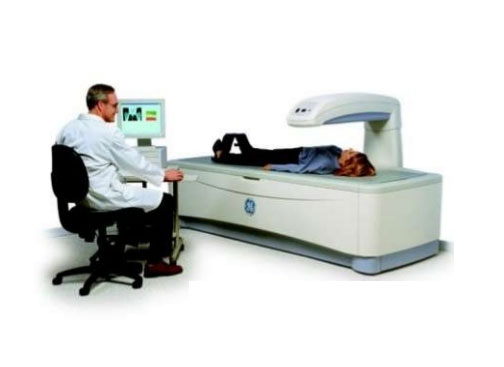
Dual X-ray absorptiometry (DXA) is the preferred technique for measuring bone mineral density (BMD). DXA has also been called dual energy X-ray absorptiometry, or DEXA. DXA is relatively easy to perform and the amount of radiation exposure is low. A DXA scanner is a machine that produces 2 X-ray beams, each with different energy levels. One beam is high energy while the other is low energy. The amount of X-rays that pass through the bone is measured for each beam. This will vary depending on the thickness of the bone. Based on the difference between the two beams, the bone density can be measured.
At present, DXA scanning focuses on two main areas -- the hip and spine. Although osteoporosis involves the whole body, measurements of BMD at one site can be predictive of fractures at other sites. Scanning generally takes 10 to 20 minutes to complete and is painless.
Osteoporosis is a gradual thinning and weakening of bones, which leads to bone fractures. Often referred to as a ?silent disease,? many women and men are unlikely to find out they have osteoporosis until they suffer a painful fracture...
Osteoporosis may be successfully prevented and treated when doctors can detect and intervene early using DXA.
Lunar Densitometry ? Dedicated to bone health and beyond.